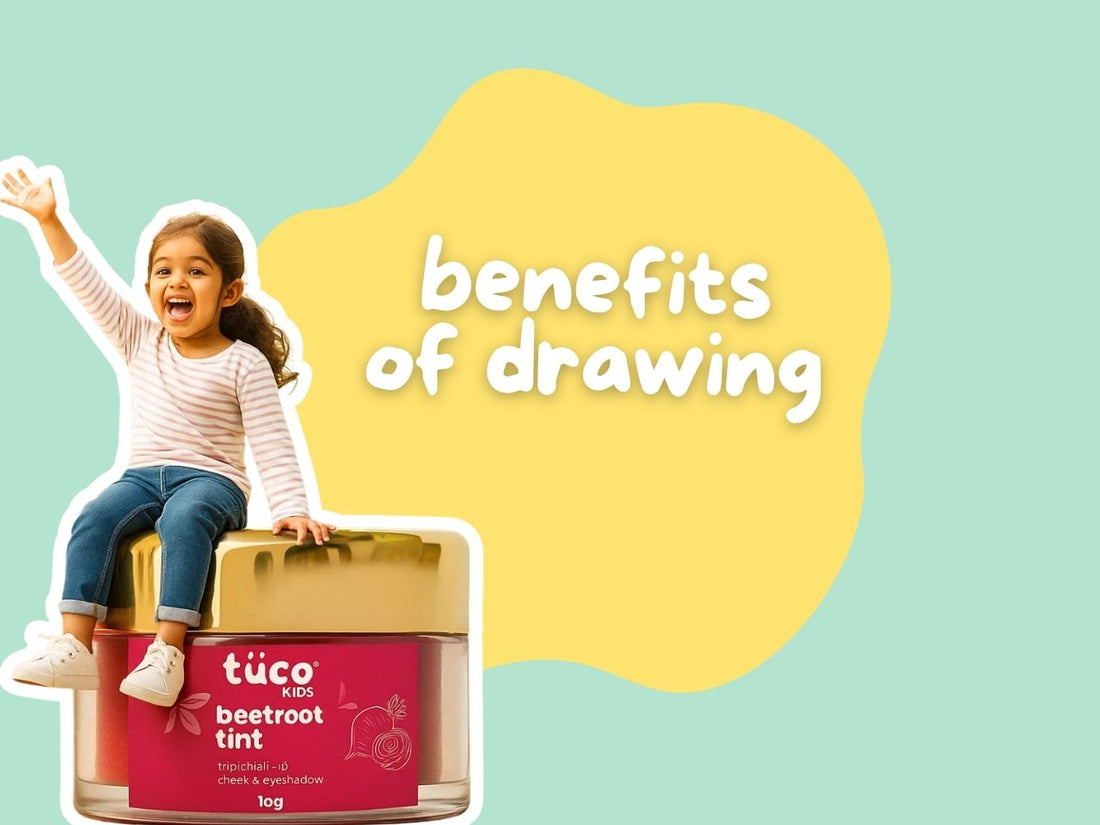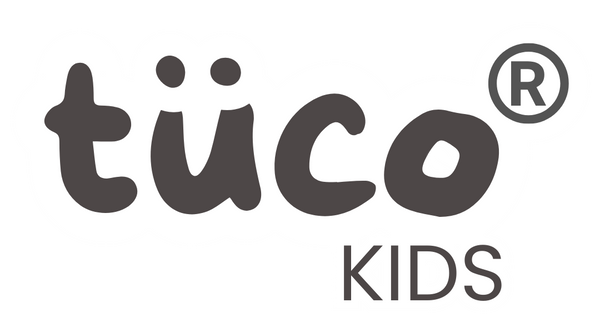
Benefits of Drawing for Kids: How It Helps Spark Creativity.
Share
Crayons, Creativity & Childhood Magic
A blank sheet of paper is a universe of possibility. For kids, it’s never “just drawing” — it’s a way of telling stories, solving problems, and practicing independence. Whether your child is making big colorful scribbles or carefully sketching a superhero, every mark they make has meaning.
In the same spirit of nurturing creativity, Tuco Kids believes in giving children the right tools to explore and care for themselves every day. Just as drawing helps kids build confidence, Tuco Kids products help them develop healthy routines with gentle care. From oat-based soap bars that calm sensitive skin to turmeric routines that brighten dullness, from mild shampoos and conditioners that make hair care fun to safe sunscreens, moisturizers, and soothing gels that protect delicate skin, every product is created with children in mind.
Benefits of Drawing for Kids: Why Every Scribble Matters
Parents often ask: “Why is drawing important for children?” The answer goes beyond “it’s fun.” Here’s what child development experts highlight:
1. Boosts Creativity & Imagination
Drawing is open-ended. A triangle can become a rocket, a crown, or even a mountain. This imaginative freedom teaches kids to think outside the box and fuels innovation. In fact, research shows that creating visuals engages multiple areas of the brain — memory, planning, and imagination all work together.
2. Builds Fine Motor Skills & Hand-Eye Coordination
Holding crayons, sketching lines, and coloring inside shapes strengthens the small muscles in the hands and fingers. These fine motor skills are critical for writing, tying shoelaces, buttoning clothes, and even self-care tasks. Drawing also improves hand-eye coordination, helping kids connect what they see with what they create.
3. Improves Focus & Concentration
Completing a drawing requires patience and planning. Kids must decide what to draw, stick with it, and refine it until they feel it’s finished. These small acts of persistence build concentration and self-control, which benefit academic learning and daily routines.
4. Encourages Emotional Expression
Children often express emotions in color and form before they have the words. A dark sky may signal worry, while a rainbow reflects happiness. Drawing provides a safe outlet for self-expression and helps parents understand their child’s feelings.
How Parents Can Spark Creativity
Encouragement is key to helping children enjoy drawing. Here’s how parents can make it exciting and stress-free:
-
Keep supplies handy: Stock up on crayons, markers, pencils, and sketchpads. Make sure they’re always accessible.
-
Draw with them: Kids are more motivated when parents join in. Your doodles don’t have to be perfect!
-
Make it part of routines: After bath-time with Tuko Kids gentle body wash and lotion, settle into cozy pajamas and enjoy a quiet drawing session.
-
Use fun prompts: Instead of “draw something,” try “draw a tree with a secret door,” or “design a pizza with magical toppings.”
-
Celebrate effort, not outcome: Encourage their imagination, not perfection. Say, “I love how you used so many colors” instead of “That looks perfect.”
-
Show off their creations: Stick them on the fridge, frame favorites, or create a scrapbook of progress.
What to Expect from Kids’ Drawings at Different Ages
Every age group expresses creativity differently. Parents often wonder, “Is my child’s drawing normal?” Here’s a guide to what you can expect:
Ages 2–4: The Scribble Stage
-
What to Expect: Random lines, circles, and scribbles that don’t look like objects yet. Kids experiment with holding crayons and discovering colors.
-
How to Nurture: Provide thick crayons or washable markers. Celebrate every scribble; it’s the first step in visual communication.
Ages 4–6: Shapes and Symbols
-
What to Expect: Drawings begin to show recognizable forms — suns, stick figures, houses, trees. Kids start connecting shapes to real-world objects.
-
How to Nurture: Introduce simple drawing prompts (draw your family, draw your favorite toy). Keep supplies accessible and fun.
Ages 6–8: Storytelling Through Drawing
-
What to Expect: More details appear — fingers, hair, pets, clothes, or small scenes like a playground. Kids start to tell stories through their drawings.
-
How to Nurture: Ask questions about their drawings (“Who is this?” “What’s happening here?”). This builds narrative thinking alongside art.
Ages 9–12: Experimenting with Style
-
What to Expect: Better proportions, backgrounds, action scenes, and even perspective (drawing 3D shapes). Kids may compare their art to peers.
-
How to Nurture: Encourage creative freedom — comics, fantasy worlds, or themed art challenges. Provide different materials (colored pencils, sketchbooks).
Ages 12–15: Realism and Emotional Depth
-
What to Expect: Teens may focus on portraits, landscapes, or abstract ideas. Their art may reflect moods, identity, or personal interests.
-
How to Nurture: Support experimentation — whether it’s realistic shading, digital drawing, or abstract painting. Encourage them to share their art proudly.
How Parents Can Make Drawing Fun & Creative
-
Keep it Playful: Treat drawing as play, not homework. Provide freedom without strict rules.
-
Join In: Draw with your child. Kids love when parents doodle alongside them.
-
Use Prompts: “Draw a pizza with silly toppings” or “Draw a superhero who saves animals.” Prompts spark imagination.
-
Show Off Artwork: Hang drawings on the fridge or frame special ones to build confidence.
-
Introduce Variety: Beyond crayons, try chalk, watercolors, or digital drawing apps for older kids.
-
Link to Daily Life: After reading a story, ask your child to draw their favorite scene. After a nature walk, sketch the flowers or birds they saw.
Fun Drawing Ideas by Age
-
Simple Drawings for Kids (2–4 years): Suns, rainbows, smiley faces, houses, balloons.
-
Basic Drawing for Kids (4–6 years): Animals like cats, dogs, fish, or birds; trees and flowers.
-
Easy Drawings for Kids (6–8 years): Cars, rockets, dinosaurs, underwater scenes.
-
Drawing for Older Kids (9–12 years): Comics, fantasy worlds, superheroes, sports scenes.
- Teen Drawing Ideas (12–15 years): Portraits, landscapes, abstract art, mood-inspired drawings.
Drawing for kids is far more than doodles on paper — they are stepping stones for creativity, fine motor skills, brain development, and emotional expression. From the joyful scribbles of toddlers to the thoughtful sketches of teens, every stage matters.
After a fun-filled day with colors and crayons, it is time to clean up with Tuco Kids. From gentle soaps and shampoos to lotions and sunscreens, Tuco makes every routine easy and safe. Caring for kids is simpler when Tuco is part of their everyday.
By encouraging drawing as a fun, pressure-free activity, parents can help children develop not just their artistic abilities, but also their imagination, patience, and confidence. Whether it’s simple drawings for kids or detailed storytelling sketches, every line drawn is a line toward growth.

